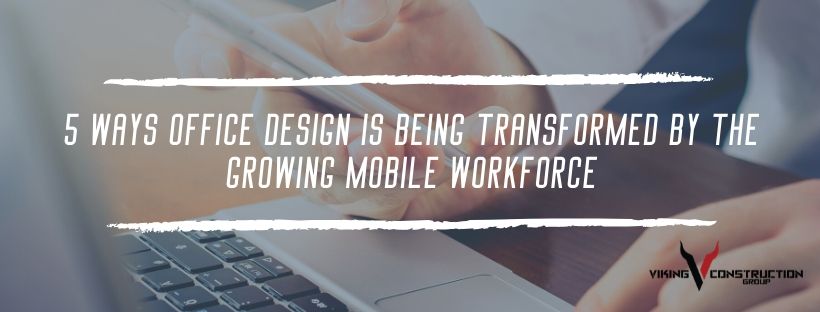As today’s Workforce changes, all the signs are pointing to a future where many of us will work remotely and to a degree of flexibility never before seen in traditional offices. There’s a growing expectation among workers to see a shift towards flexible hours and more remote workdays.
Here are five changes, created by the growing mobile workforce, that are redefining office standards.
Designated desks are a thing of the past
The age of assigned desks and cubicles is finally coming to a close. As more people are working from home full-time or only coming into the office as needed, it’s making less sense for employers to keep assigned desks for individual employees.
As a result, collaborative workspaces and unassigned seating, is gaining its place in office infrastructure, it better serves the employees who are coming and going throughout the workday. This allows employees to use different areas that suit what they’re currently working on, and employers save as they use less space and resources. Clusters of desks or tables, for team projects, is also becoming popular as a way of encouraging collaboration and unity.
Using more breakouts spaces
While some people work more effectively with a traditional office desk, others are more productive working on a couch or an easy chair. Offices are responding by creating a variety of furniture zones offering relaxed and traditional seating. This could vary from collaborative tables, to those who prefer working in more relaxed and social setting, to soundproof areas for those who prefer to work in solitude and quiet.
Make conference rooms smaller
Large conference rooms and boardrooms, with grand tables fitting 20 people, are also losing their place in the modern office. Rather, smaller conference rooms fitting 4 to 6 people equipped with a multimedia Center are becoming more useful. In this new context of mobile climate, many employees only enter the physical office for face-to-face meetings with coworkers and clients.
Technology to keep connected
With more employees working from home, and even from other countries, it’s necessary to be equipped with the proper technology to keep everyone connected. VoIP phones are one of the tools offices are using, they connect through the internet, allowing workers from around the world to appear as though they are calling from the office. Keeping every member of a team on track with tasks and projects requires meeting them wherever they are, whether that’s at home, another country or a coffee shop.
Smaller offices minimize carbon footprint
Having a smaller office and more remote workers have many benefits, both financially and environmentally. Employers benefit from having fewer people in the office, allowing for a smaller building, meaning lower rent and energy costs. For employees, getting to work remotely means they don’t have to commute and they can enjoy the convenience and comfort of working from wherever they choose. For the environment, cutting energy use by having a smaller building and eliminating commuting can significantly minimize the carbon footprint.
While tradition is hard to let go, the growing mobile workforce is already transforming the definition of what an office is. As the idea of working mobile gains acceptance, of both the workers and the corporate sector, the traditional office is giving away to the connectivity technology and creative productivity of versatile spaces.
If you enjoyed this post, you might like these:
- How to Plan for a Major Remodel
- What’s the Difference Between a Remodel and a Renovation?
- 8 Ways to Personalize Your New Home
- How to Consider Pets in Your Home Renovation
- How to Integrate Outdoor Living into Your Home
- How High End Should We Go When Remodeling a Home to Sell
- 8 Useful Tips on Building an Energy Efficient Home
- 5 Great Commercial Construction Interview Questions

